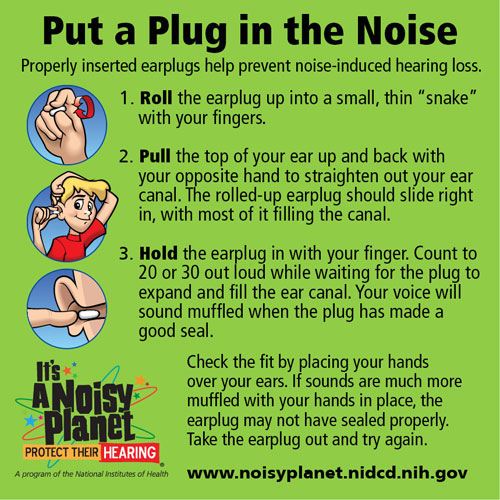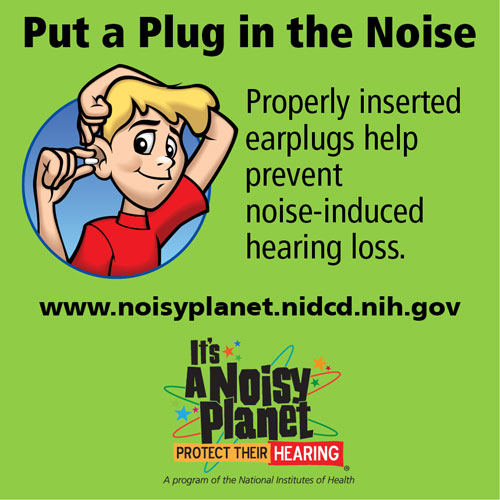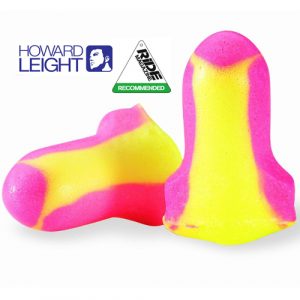It might seem like an odd question but … do you know how to fit foam ear plugs?
While you might not be sure about how to get those foam ear plugs in, we’re about to help you find out just how to do that. You see, it’s not quite so challenging – though it is actually very easy to make a mistake.
You might see yourself laughing away on your next flight once you know this little set of foam ear plug fitting tricks. You’ll likely see people trying to stuff them into their ears, with little to no success. If you see that, you should probably look to help whoever it is who is making the mistake and show them where they might be going wrong!
It’s all about the little tricks which we forget to do. Thanks to the infographic below from the It’s A Noisy Planet* website, though, you will soon realise just where you might be going wrong. It’s the little differences that can help to make sure you don’t hurt your ears, or to make sure that you can even use the foam ear plugs in the first place.
So, take a look at what we have waiting for you here: you’ll soon see just how much of a difference that this can make.

See how easy it is to insert your foam ear plugs?
As you might have noticed, then, the problem you have is usually to do with the form and shape of the plug. If you put in plugs that make it hard for you to get them out, then you have not put them in right. If they go in with too much ease, to the point where getting them is out going to be tough, then you maybe were a little too tough on them!
With that in mind, then, we recommend that you spend a bit more time just trying to get used to this problem. take some time to look at the infographic again, and you will soon spot where you are going wrong. In fact, the most common problem is the first step; many people will merely condense it ever so slightly, instead of rolling it as small and as thin as they can get it.
Also, remember that you need to make space for it within your ear. Many people just try and force and cram it into the ear; this is not likely to produce anything other than trauma to your ear!
Try and instead just use the other hand to try and make sure that your ear canal is as straight as can be. Once you get these two simple steps right, you will find it much easier to get those foam ear plugs in without any discomfort.
So, if you are sitting next to someone on a flight and they appear to be having their own mini battle with a pair of ear plugs, show them this infographic: it’ll save them some serious discomfort!
Beyond just using foam earplugs on an aeroplane, there are many other situations where properly inserting foam earplugs can make a big difference in protecting your hearing and reducing noise. Construction sites, noisy factories, concerts, motorcycles, and power tools are just some examples of noisy environments that can cause permanent hearing damage over time.
When trying to block loud noises in any setting, the most important factor is getting a tight seal in the ear canal so sound waves can’t sneak past the earplug. Loose-fitting earplugs provide very little noise reduction. This is why taking the time to properly roll, compress, and insert foam earplugs makes such a difference.
The technique shown in the infographic is generally the best method, but people with very small or very large ear canals may need to adjust the rolling and compressing to fit their anatomy. Don’t be afraid to experiment with different sizes and depths of insertion to find what works best for you. Having earplugs that are comfortable and stay put is critical for consistent noise protection.
For extremely loud environments such as airshows or motorsports events, consider using earplugs and earmuffs together for maximum noise reduction. The combination can block much more sound than either protective device alone. Just make sure you insert the earplugs first before putting on the earmuffs over them.
It’s also important to replace foam earplugs regularly instead of reusing the same pair over and over. Foam earplugs are designed to expand back to their original shape slowly over time, but frequent compressions can weaken the foam and reduce their effectiveness. Changing your earplugs every few weeks ensures you’re getting the full noise blocking ability.
Children especially need protection for their developing ears in noisy surroundings. Their smaller ear canals make proper fit even more essential. Supervise children when they wear earplugs and teach them how to insert foam plugs correctly. Establishing safe hearing habits early on can preserve kids’ hearing for decades to come.
Research different types of earplug materials such as silicone, foam, or custom-moulded plugs to determine which are most suitable for your particular noise exposures. An audiologist can help recommend appropriate protection solutions if you are frequently in hazardous noise or have concerns about ongoing damage.
Preserving your hearing ability is crucial for work performance, safety, social interaction, and simply enjoying everyday sounds. Blocking excessive noise with correctly-worn earplugs is one of the easiest ways to prevent permanent ear damage. Review proper foam earplug insertion techniques regularly so you don’t forget these small but mighty hearing protectors.
* It’s a Noisy Planet. Protect Their Hearing® is a national public education campaign supported and administered by the US National Institute on Deafness and Other Communication Disorders (NIDCD), part of the National Institutes of Health. The campaign is designed to increase awareness among children ages 8 to 12 (preteens) and their parents about the causes and prevention of noise-induced hearing loss.
Zoom Health is a leading UK supplier of Home Health Tests and Earplugs





